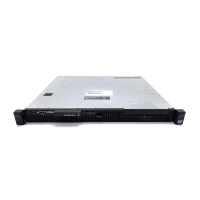Stacking S-Series Switches | 1019
50
Stacking S-Series Switches
Stacking S-Series Switches is supported on platform s
This chapter contains the following sections:
• S-Series Stacking Overview on page 1019
• Important Points to Remember on page 1026
• S-Series Stacking Configuration Tasks on page 1035
S-Series Stacking Overview
Up to eight S-Series systems can be interconnected so that all of the units function as a single unit.
A stack is analogous to an E-Series or C-Series system with redundant RPMs and multiple line cards.
FTOS elects a primary and secondary management unit, and all other units are member units. The
forwarding database resides on the primary, and all other units maintain a sychnronized local copy. Each
unit in the stack makes forwarding decisions based on their local copy.
FTOS presents all of the units like line cards; for example, to access GigabitEthernet Port 1 on Stack Unit
0, enter
interface gigabitethernet 0/1 from CONFIGURATION mode.
High Availability on S-Series Stacks
S-Series stacks have primary and secondary management units analogous to Dell Force10 Route Processor
Modules (Message 50-1). The management units synchronize the running configuration and protocol
states so that the system fails over in the event of a hardware or software fault on the primary. In such an
event, or when the primary is removed, the secondary unit becomes the stack manager and FTOS elects a
new secondary. FTOS resets the failed management unit, and once online, it becomes a member unit; the
remaining members remain online.
Note: S-Series Stackin is not supported on the S60 system.

